The natural beauty of the Lofoten Islands is nothing short of a captivating masterpiece, offering exceptional photographic opportunities in the remote corners of Norway. The soft winter sunlight and the majestic mountain ranges rising from the sea create a stunning spectacle.
Located above the Arctic Circle in northwest Norway, the Lofoten Islands boast deep fjords, rugged peaks, beaches, and charming red fishing cabins, making it a haven for landscape photography.
Especially in February, the low light conditions of winter cast a magical glow over the surroundings.
Hamnøy Island
Perhaps the most iconic photography spot in Lofoten, Hamnøy is a small island and village near Reinefjord, just outside the town of Reine. The red wooden cabins hug the rocky coastline, with towering peaks as a backdrop. Interestingly, I stayed in these cabins, known as Eliassen Rorbuer. This shot was taken from a nearby bridge, with the morning light casting a fresh coat of snow over the entire scene.
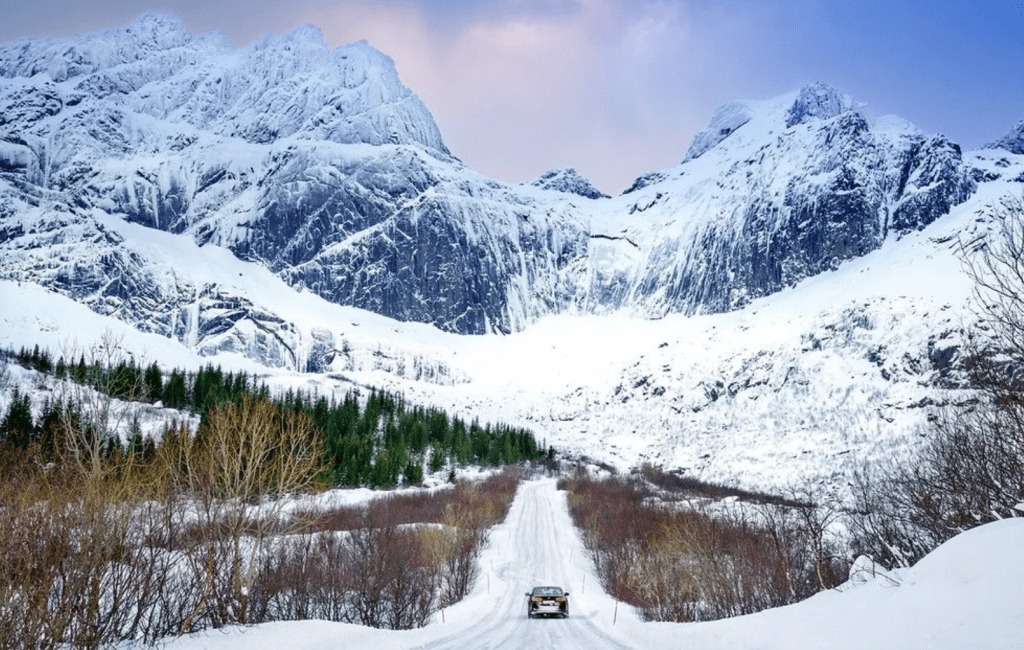
Exploring the Lofoten Islands
Connected by the E10 highway, the Lofoten Islands feature a network of bridges and tunnels. There are numerous side roads to explore, such as the FV807 route, which winds through spectacular mountains to the fishing village of Nusfjord. Winter driving in Lofoten can be challenging due to snow-covered roads and ever-changing weather. All rental cars come equipped with studded snow tires.
Aurora Borealis
One of the main reasons for winter photography in Lofoten is the enchanting Northern Lights, visible between September and March. The extraordinary light show conditions are ideal due to the high latitude and long nights. However, witnessing the Aurora is not guaranteed; clear skies and strong Aurora activity are necessary. During my travels in Lofoten, I was fortunate to witness impressive displays on two evenings.
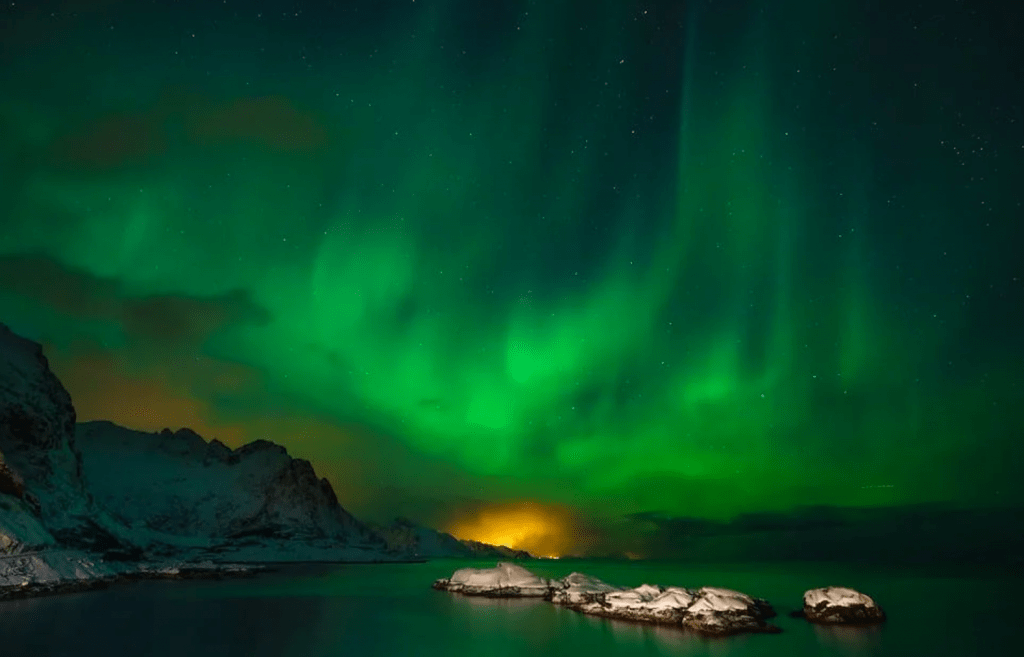
Norwegian Fishing Boats
Fishing has a history of over a thousand years in the Lofoten Islands. The unusually warm waters attract millions of Arctic cod for spawning from February to April. Most residents are somehow involved in the cod fisheries. Each morning, I watched fishing boats head to work or observed people hanging “wind-dried fish” outdoors for air-drying.
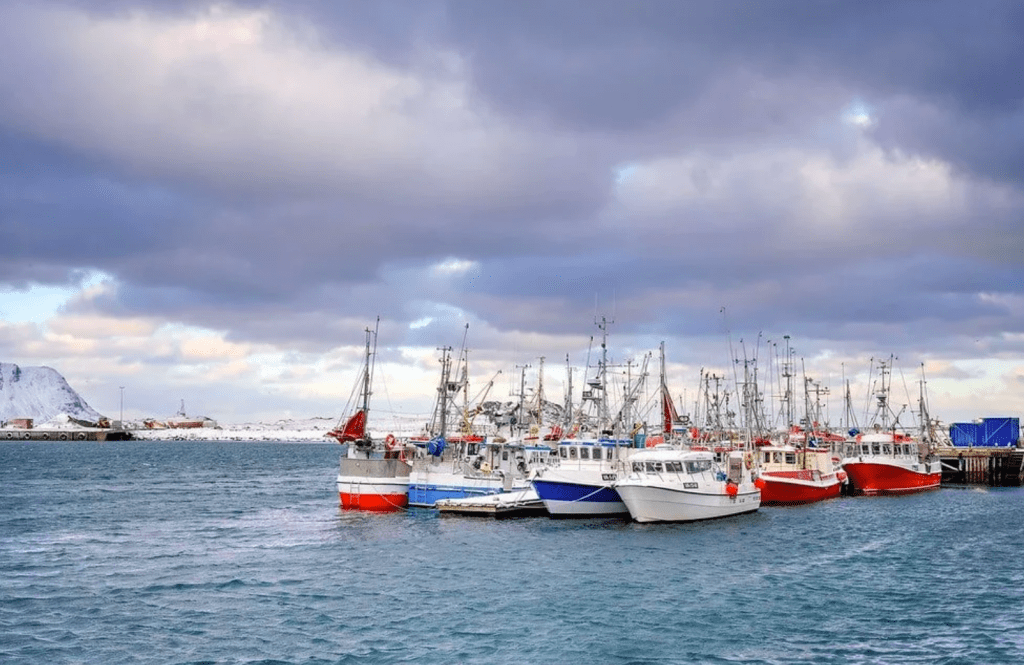
Sakrisoy Rorbuer Fishing Cabins
More renovated fishing cabins in the Lofoten Islands, these structures are part of Sakrisoy Rorbuer. The scenery is astonishingly vivid, almost as if they were crafted specifically for perfect postcard photos. Here, snow-covered Lofotenveggen mountains rise dramatically behind small yellow cabins, overlooking a shallow blue bay. It’s a mosaic of colors that evolves with the changing seasons.
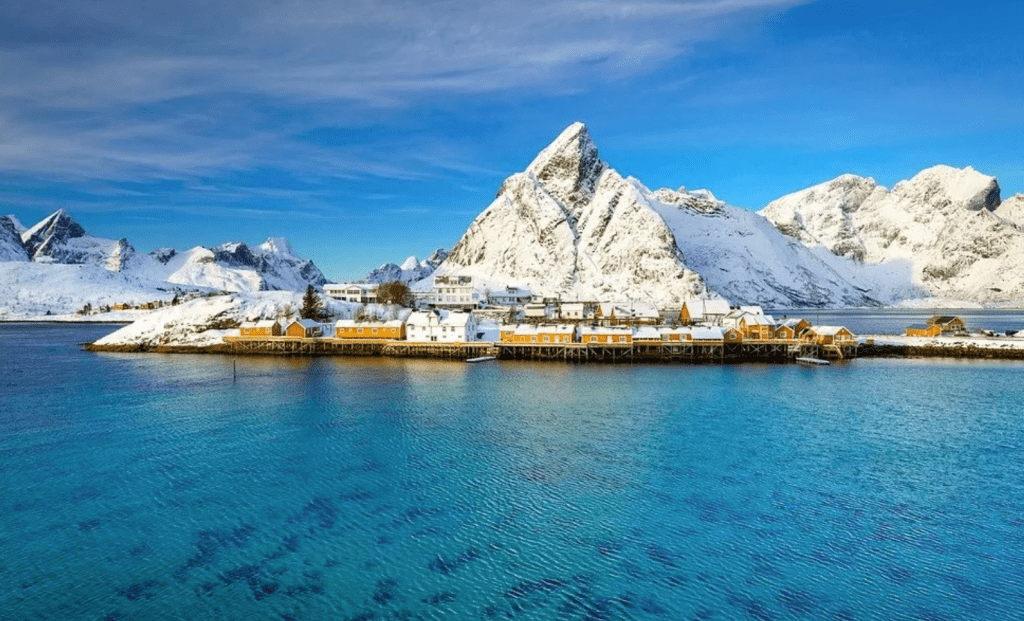
Rambergstranda Beach
The distinctive red color is achieved by mixing pigments with fish liver oil. In areas untouched by snow, you’ll find swaying grasslands and deep blue waters. Even with temperatures reaching 20 degrees Celsius on days like this, everything remains closed due to the cold. If you plan on taking photos, it’s advisable to have gloves ready at all times. Check out my cold weather survival guide for more information.
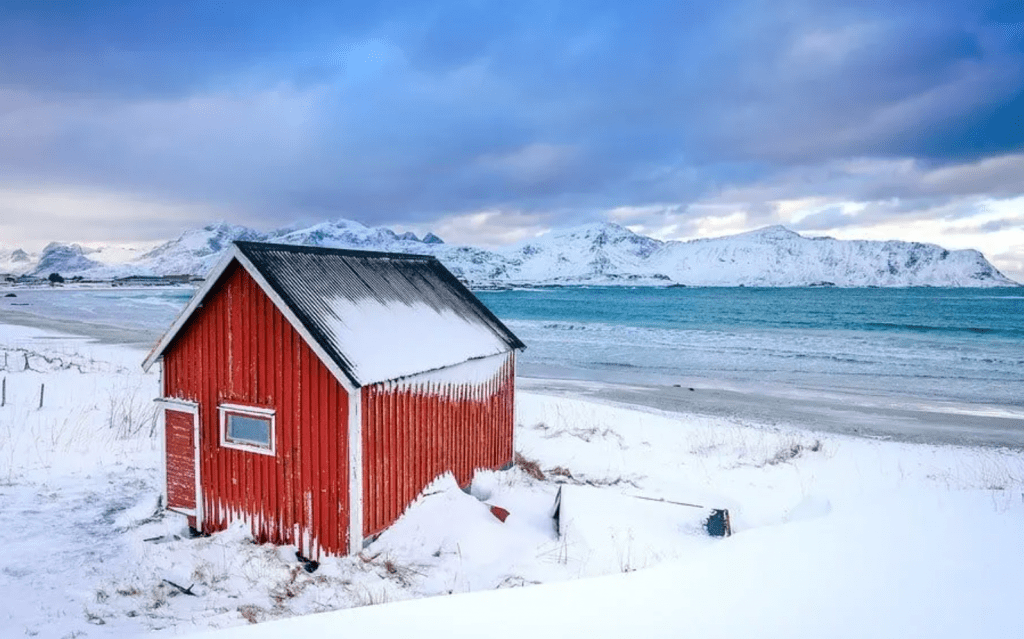
Arctic Surfing in Unstad
Influenced by the warm waters of the Gulf Stream, Lofoten’s climate, despite being above the Arctic Circle, is relatively mild. Coupled with the remarkable insulating properties of modern wetsuits (if you’re feeling cold in the water, you’re doing it wrong), these waters attract surfers of all skill levels from around the world. I decided to join the Unstad Arctic Surfing team, and it was truly a wild experience!
Lofoten Mountains
Standing on any beach in the Lofoten Islands, most topographies soar above you, reaching up to a thousand meters above sea level. Inhabitable land is the exception, not the rule, existing sporadically between the ocean and the colossal mountain ranges forming the entire island chain. In some places, the mountains rise almost vertically from the sea, providing a breathtaking backdrop to all your activities here.
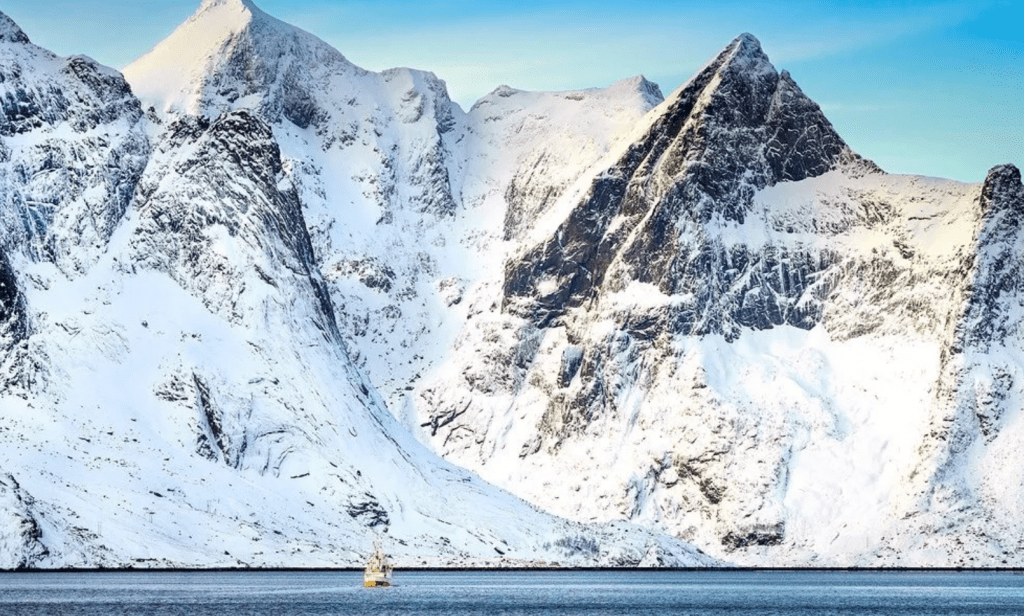
Hiking to Kvalvika Beach
In a remote corner of Moskenesøya, this beach can only be reached on foot. Park your car, traverse a simple path through nearby peaks, and an hour later, you’ll arrive at one of the most beautiful spots in the entire archipelago. In warmer months, Kvalvika Beach is an excellent camping spot with firewood and a mountain stream—even on snowy days, it’s a memorable visit. Just be prepared for longer hikes in snowy conditions.
Å, Norway
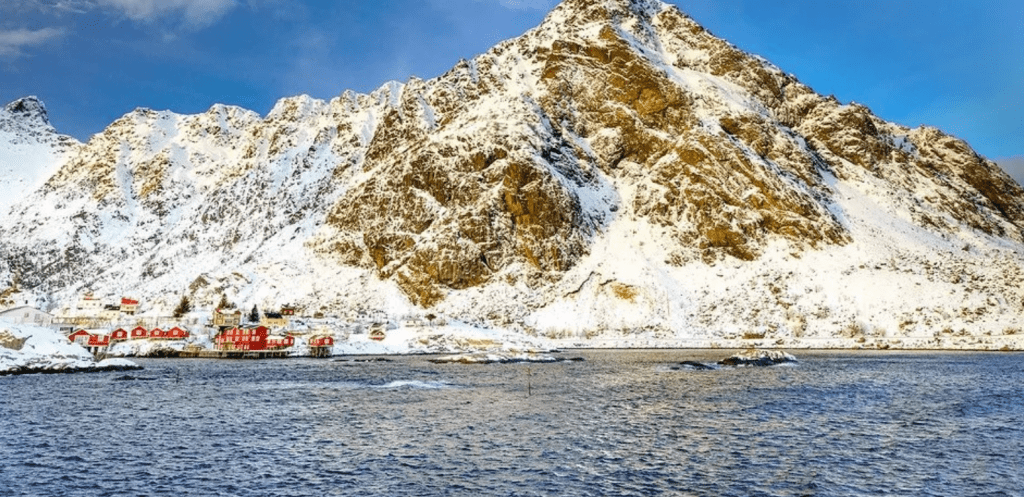
No, it’s not a typo—this is pronounced “Aw,” an Old Norse word meaning “small river.” This quaint and popular village is located at the southern tip of the Lofoten Peninsula. People come from far and wide to snap photos next to the city sign, sometimes even making off with the sign, much to the ongoing annoyance of the town’s 150 residents.
Ryten Mountain View
It might look intimidating, but Ryten (543 meters) is surprisingly easy to climb due to its gradual slope—it only takes three to four hours. If you’re in Lofoten, it’s an absolute must. The views from Ryten are unparalleled, allowing you to take in the beauty of Kvalvika Beach and the surrounding mountains, leaving you breathless. In winter, exercise caution, and it’s recommended to use crampons and an ice pick.
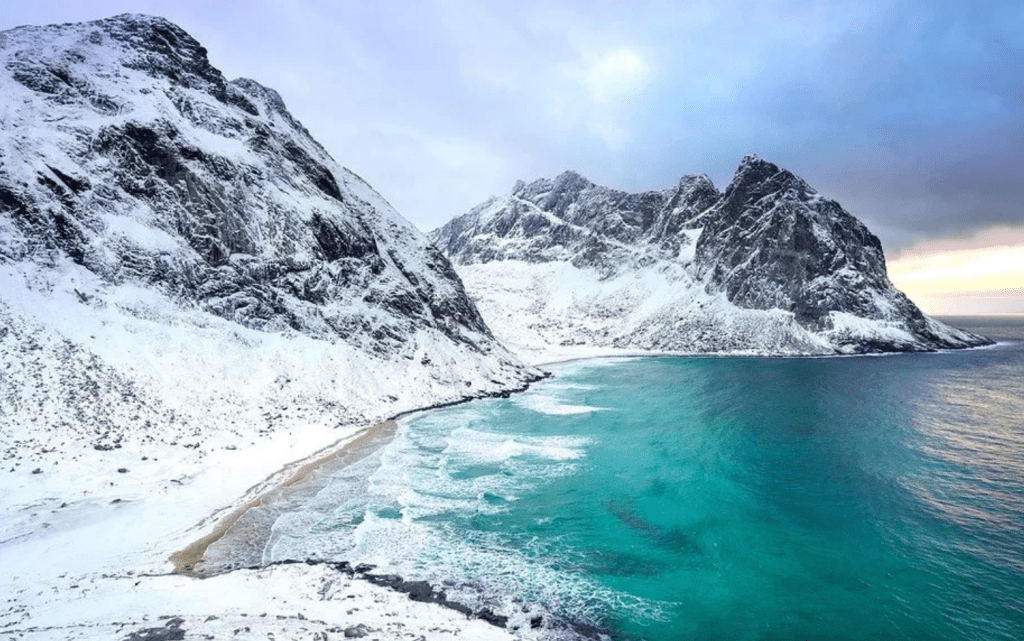
Endless Sunsets
Lofoten, being above the Arctic Circle, means many things. It means polar nights, where the sun stays below the horizon for an entire day. It means the midnight sun, with the sun lingering in the sky for over 24 hours. Most importantly, it means incredible sunrises and sunsets that can last for several hours—yes, hours—painting the landscape and the sea in a myriad of colors. I’ve never witnessed scenes like these before.
Lofoten Stockfish
The tradition of drying unsalted fish (mainly cod) on large racks dates back at least a thousand years and remains a vital part of Lofoten’s economy. When these racks are full of fish, it’s a spectacular sight. If you want to delve into the history of this ancient practice, head to the comprehensive Stockfish Museum in Å, the oldest fishing village in Lofoten. Depending on the freshness of the fish, be prepared for some unpleasant surprises if you get too close!
Fredvang Bridges
Constructed in 1988, these curved structures connect the fishing village of Fredvang with its rocky neighbor, Flakstadøya. They perfectly mirror the curves of the surrounding low-lying islands—an odd effect, as if you’re getting a glimpse of everything beneath the islands, with all the rocks and soil stripped away. Driving across is quite amusing, with parking spots every few hundred meters because the bridges aren’t wide enough for two cars side by side.
Conclusion
Exploring the Lofoten Islands in winter is a photographer’s dream. The combination of majestic landscapes, charming fishing villages, and the magical Northern Lights creates a visual symphony that’s hard to match. Whether you’re capturing the red cabins of Hamnøy, the Arctic surfers in Unstad, or the vibrant hues of a Lofoten sunset, each frame tells a unique story of this Arctic wonderland. So, bundle up, grab your camera, and embark on a journey through the frozen beauty of the Lofoten Islands. It’s a visual feast that will stay with you long after the snow has melted.

Leave a Reply